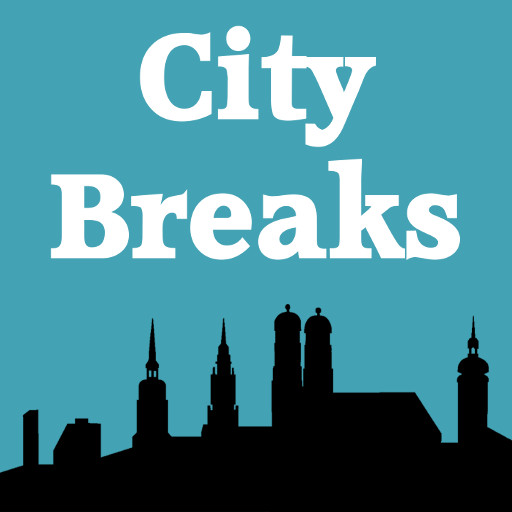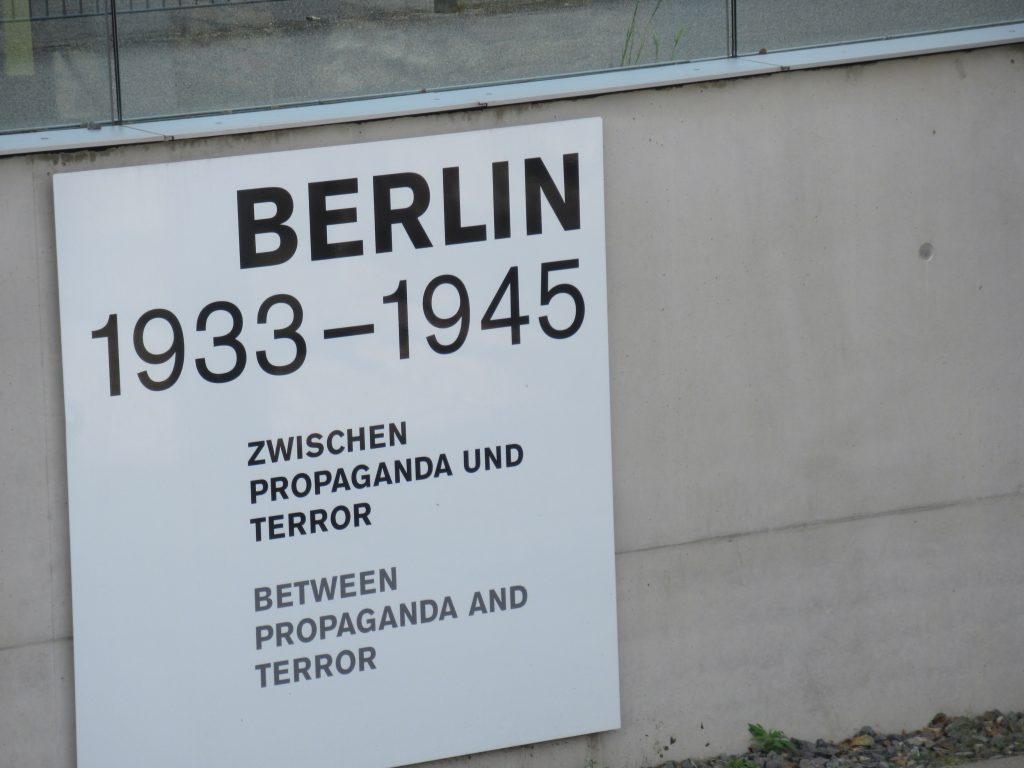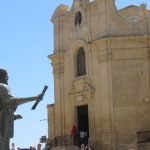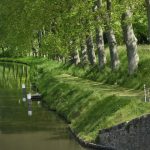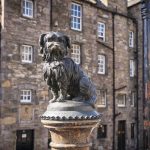You can’t really go to Berlin without mentioning the war. In fact for anyone with an interest in history it might be the main focus of their visit. There are lots of places in the city which will fill in the details of what happened in Berlin during the 1930s and 40s and this post summarises them. There’s so much to say on this topic that we are saving aspects of it for three more episodes: the holocaust and remembrance, the Berlin Wall and finding East Germany in Berlin today. But for finding sights relating to World War 2 in Berlin today ….. read on!
The German Historical Museum
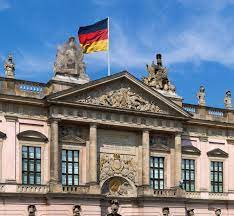
This museum, known as the Deutsches Historisches Museum in German, is closed for major renovations until 2025, but you can still browse its website for an overview of the collection. The section on 1918-1945 covers everything from the inflation and instability after the Versailles Treaty to the rise of the Nazis (book-burning, the 1936 showcase Olympics, Kristallnacht) and the war itself which left three quarters of Berlin in ruins and half a million people homeless. It is a good place for an overview of the period, set in the context of wider German history.
Bebelplatz
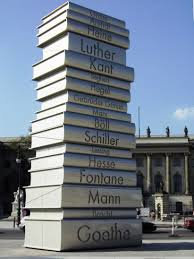
Bebelplatz is a pretty square on Unter den Linden, near the German Historical Museum. It was the site of the book-burning by Nazi students in May 1933, remembered today by a plaque in the middle of the square, where you can look down through a glass window at an underground display of empty bookshelves. This event, covered in a previous post, was a sinister sign of the acceptance by many of Nazi ideology. As the writer Volker Weidermann has commented, until he saw it for himself even Propaganda Minister Josef Goebbels, who attended and made a speech, had not believed that Berliners ‘would stand by and willingly watch the books of their best authors being surrendered to the flames’.
The Olympic Stadium
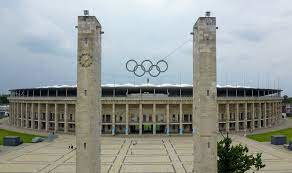
This showpiece stadium, reachable on the U2 underground line, or S Bahn Line 5, was built by the Nazis for the 1936 Olympic Games. Visit it to see where 100,000 spectators gathered to watch the spectacular opening ceremony which began after a 7-minute fanfare heralding Hitler’s arrival. He strode, wrote Oliver Hilmes in his book Berlin 1936, ‘through the arena to his box seat like a Roman emperor’.
On a guided tour you can learn much more about the 1936 Olympics, including the triumph of the black American athlete Jesse Owens who delighted the crowd by winning four gold medals, a triumph which enraged Hitler who refused to shake hands with him. There is also a history trail with 45 information panels, plus a range of non-historical tours on, for instance, the stadium’s sporting legacy.
Topography of Terror
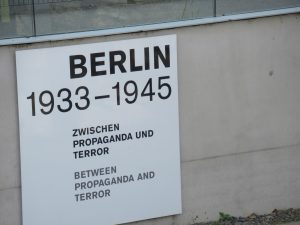
This is the most detailed site on the subject to be found in Berlin. There is an extensive collection of documents and photographs explaining the history of World War 2, displayed on the site which was formerly the SS and Gestapo Headquarters. It was reduced to rubble in the war, but later rebuilt so that it could become an indoor and outdoor history museum, recalling the terrors of the Nazi regime in order that future generations would always know what happened.
You can browse the displays yourself, or get an audio guide which will take you to 15 places around the site and explain their significance. There are many eye-witness accounts, such as that of Christabel Bielenberg, remembering a chilling visit to the Gestapo Headquarters in 1945 in order to plead for her husband’s release, and Josef Müller describing his months of imprisonment here, shackled, starving, subjected to repeated interrogations and hearing the screams of tortured prisoners in nearby cells.
Hitler’s Bunker
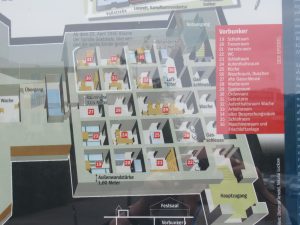
More accurately, this is the site of Hitler’s bunker, which was destroyed by Soviet troops in 1945. It is marked by information panels, recalling the 36 rooms which were originally here; living quarters, offices, storerooms, even Eva Braun’s dressing room. It was here that she and Hitler married just hours before they both committed suicide and also here that Josef and Magda Goebbels, unable to accept that the Reich was finished, retreated with their six small children, poisoned them and then took their own lives.
The German Resistance Memorial Centre
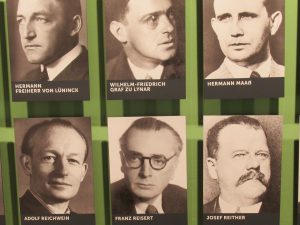
This museum is housed in the Bendlerblock, which was the Supreme Army HQ during the war. It is primarily a memorial to Claus von Stauffenberg, who tried to assassinate Hitler in the July Plot of 1944 by leaving a bomb in a briefcase close to where the Führer was due to speak. The plot failed and he and 4 men who had helped him were arrested and executed that same day, here in the courtyard.
A memorial plaque records their names, along with the wording ‘You sacrificed your lives for freedom, justice and honour.’ Inside there is a comprehensive display of documents and photos relating to the Stauffenberg plot and also many more rooms dedicated to the other groups who tried to resist Nazi-ism, including Workers’ Movements, Christians, Young People, Artists and Intellectuals. Taken overall the museum is a moving testament to the thousands of brave Germans who tried to oppose the regime despite the terrible dangers of doing so.
The Neue Wache War Memorial
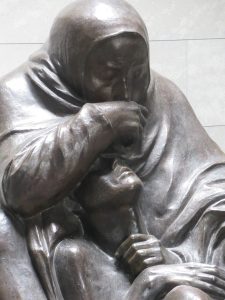
Inside the Neue Wache building on Unter den Linden, next door to the German Historical Museum, is a very moving statue, Mother with her Dead Son, chosen in the 1990s to be the focus of the new Germany’s Memorial to the Victims of War and Dictatorship.
Underneath are buried an unknown soldier and an unknown holocaust victim and the statue, simply lit in a large empty space, is all the more moving when you know that its sculptor, the Berliner Käthe Kollwitz, lost her son Peter, in the First World War.
Listen to the podcast
Suggested Reading
Berlin 1936 by Oliver Hilmes
Links for this post
German History Museum
Bebelplatz book-burning memorial
Berlin Olympic Stadium (guided tours)
Topography of Terror
The site of Hitler’s bunker
The German Resistance Memorial Centre
Neue Wache War Memorial
Previous episode Four Berlin Squares
Next episode Berlin: Holocaust and Remembrance
Last Updated on April 9, 2025 by Marian Jones
